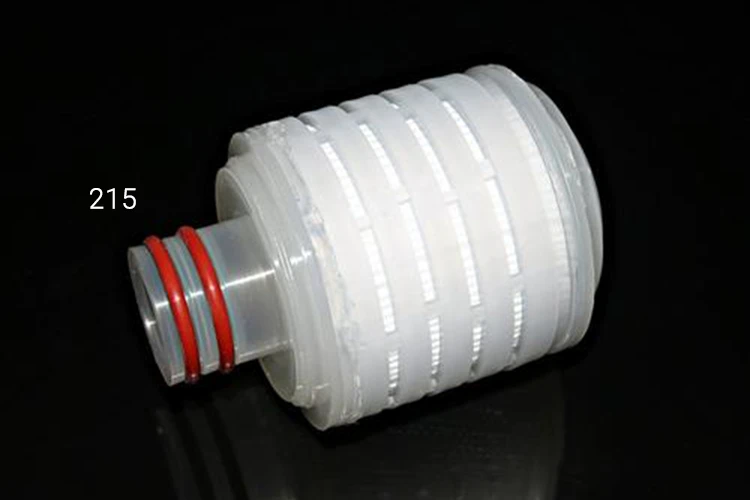Filter cartridge connectors are important part at filters in ensuring secure and efficient fluid filtration across industries. Their design and size directly impact is installation, leak prevention, and ease of maintenance. Below, we dive into four of the most common connector types—215, 220, 222, and 226—along with their standardized dimensions and key features.
Type 215 Connector
The Type 215 connector is a compact option ideal for applications requiring space efficiency. Its inner diameter (ID) measures 23.1mm, while the outer diameter (OD) is 31.3mm. Like other connectors, the Type 215 also include two O-rings. Its total outer diameter (including O-ring and structural components) is 33.6mm, ensuring a snug fit in compatible filter housing. This connector is often used in small-scale residential water filters or low-pressure industrial setups where simplicity and cost-effectiveness come first.

Type 220 Connector
Slightly larger than the 215, the Type 220 connector features an inner diameter of 24.6mm and an outer diameter of 33.9mm. Similar to the 215, it also includes two O-rings, and its total outer diameter extends to 35.6mm. The elasticity of O-ring makes installation straightforward and fully matched, though end-users must ensure proper alignment to avoid leaks. This connector is popular in mid-sized filtration systems, such as commercial water purifiers or light-duty chemical processing units, balancing durability with moderate flow rates.
Type 222 Connector
The Type 222 connector steps up in both size and complexity. With an inner diameter of 32.1mm and an outer diameter of 44.3mm, it accommodates higher flow rates while maintaining structural integrity. A key advantage of the Type 222 is its integrated O-ring, which enhances sealing reliability. The total outer diameter (including the O-ring) measures 45.5mm, making it suitable for systems demanding robust leak-proof performance. This connector is widely adopted in industrial water treatment plants, pharmaceutical manufacturing, and food processing facilities where hygiene and pressure resistance are required.
Type 226 Connector
The largest in this series, the Type 226 connector, is designed for heavy-duty applications. Its inner diameter of 43.9mm and outer diameter of 56.5mm support high-volume fluid flow. Like the 222, it includes an O-ring, contributing to a total outer diameter of 58.7mm. The O-ring ensures a tight seal even under extreme pressure or temperature fluctuations. This connector is a go-to choice for large-scale industrial systems, such as oil refineries, chemical plants, or municipal water treatment facilities, where reliability and scalability are non-negotiable.

Why Connector Size and Design Matter
Choosing the right filter cartridge connector depends on several factors:
- Flow Requirements: Larger connectors (e.g., 226) handle higher flow rates, while smaller ones (e.g., 215) suit low-flow environments.
- Pressure Tolerance: O-ring-equipped connectors (222 and 226) excel in high-pressure systems by minimizing leakage risks.
- Filter Housing Constraints: Whichever filter cartridge connector is selected, it have to fit to corresponding connector in filter housing.
- Industry Standards: Compliance with industry-specific regulations (e.g., PP pleated filter Cartridge used in food & beverage industry) ensures safety and compatibility.
Installation Tips
- Always verify connector dimensions against system specifications to avoid mismatches.
- For O-ring models, inspect the ring for damage before installation and lubricate it lightly to prolong lifespan.
- Tighten connectors evenly to prevent warping or uneven pressure distribution.
Conclusion
Whether you’re maintaining a household water filter or managing an industrial filtration plant, understanding connector types like 215, 220, 222, and 226 is essential for avoiding buy a wrong one. Each connector offers different advantages and features suitable to specific flow rates, pressure levels in various applications. By matching the connector to your system’s needs, you ensure efficiency, reduce downtime, and extend the lifespan of your filtration equipment. Always consult technical guidelines or manufacturers for detailed compatibility checks before finalizing your choice.


